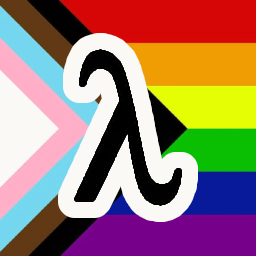This essay says that inheritance is harmful and if possible you should “ban inheritance completely”. You see these arguments a lot, as well as things like “prefer composition to inheritance”. A lot of these arguments argue that in practice inheritance has problems. But they don’t preclude inheritance working in another context, maybe with a better language syntax. And it doesn’t explain why inheritance became so popular in the first place. I want to explore what’s fundamentally challenging about inheritance and why we all use it anyway.



🙄 people who blindly say “inheritance is bad” or “composition over inheritance” and mean “no inheritance” are just like followers of religion. Always repeating the same stuff without thinking and being completely convinced they are right. Nigh everything has a place and a valid usecase and just because you don’t see it doesn’t mean nobody else does.
Edit: Also “sum types” and “algebraic data types” are horrible names. Pretty much the equivalent of “imaginary numbers”. What the fuck is a “sum type”? How do you “add” types together? Adding numbers makes sense, it has a real world equivalent. Two balls in a cup, add one ball and you have three balls in a cup. Add color to water and you have colored water. Simple. But types? The fuck?
str | intis a sum type --> does that mean sum types are adding two spaces of possibilities together aka a union of two sets? The wikipedia article is so friggin bad at explaining it to people who aren’t in the know.Anti Commercial-AI license
@onlinepersona @armchair_progamer
A type has a number of ‘inhabitants’. ‘Sum’ indeed corresponds to adding the possible inhabitants together.
A Boolean has two inhabitants - true and false. A byte has 256 inhabitants. A BoolOrByte type has 258 inhabitants.
If you have BoolByte pair, that’s a product type - 512 possible inhabitants.
It may make no fucking sense depending on your exposure to Java, where Void (literally ‘empty’) has an inhabitant, and Boolean has 5.
OK, that explains
bool | byte, but how is an enum a sum type? And what’s a product type? A product of sets is a cartesian product. How does that work with types?Anti Commercial-AI license
@onlinepersona
An enum is a sum type because the number of inhabitants of the enum is the sum of the inhabitants of its parts.
A product type’s number of inhabitants is the product of its parts’ inhabitants. So a struct would fit that definition, or a pair, or a tuple.
Looking at the pic on your Cartesian product link:
if A is an enum {x,y,z} and B is an enum {1,2,3}, then a struct AxB has 9 possible inhabitants.
OK, I think I’m getting it.
A product is a set that this is the result of an ordered cartesian products.
Car = String X String x u8.An enum is a series of "or"s.
can also be thought of as
Animal = Dog | Cat | Giraffe | Chimpanzee. WhereDogis a type that only has single value in its set akaAnimal = {1} | {2} | {3} | {4}, but it could also be strings, or other objects. Rust however allows more complex objects:In this case is
Something(u32)the equivalent of any “tagged”u32, meaning in memory it’s something like aTag + 32 bitswhereTagis a constant string of bits, maybe itself au32? Wouldn’t that make it a product type?But then
LotsOfThingsis itself a product typeLotsOfThings = bool x String.So to put it all together
ComplexEnum = Nothing | TaggedU32 | (bool x String)? Is that correct?Anti Commercial-AI license